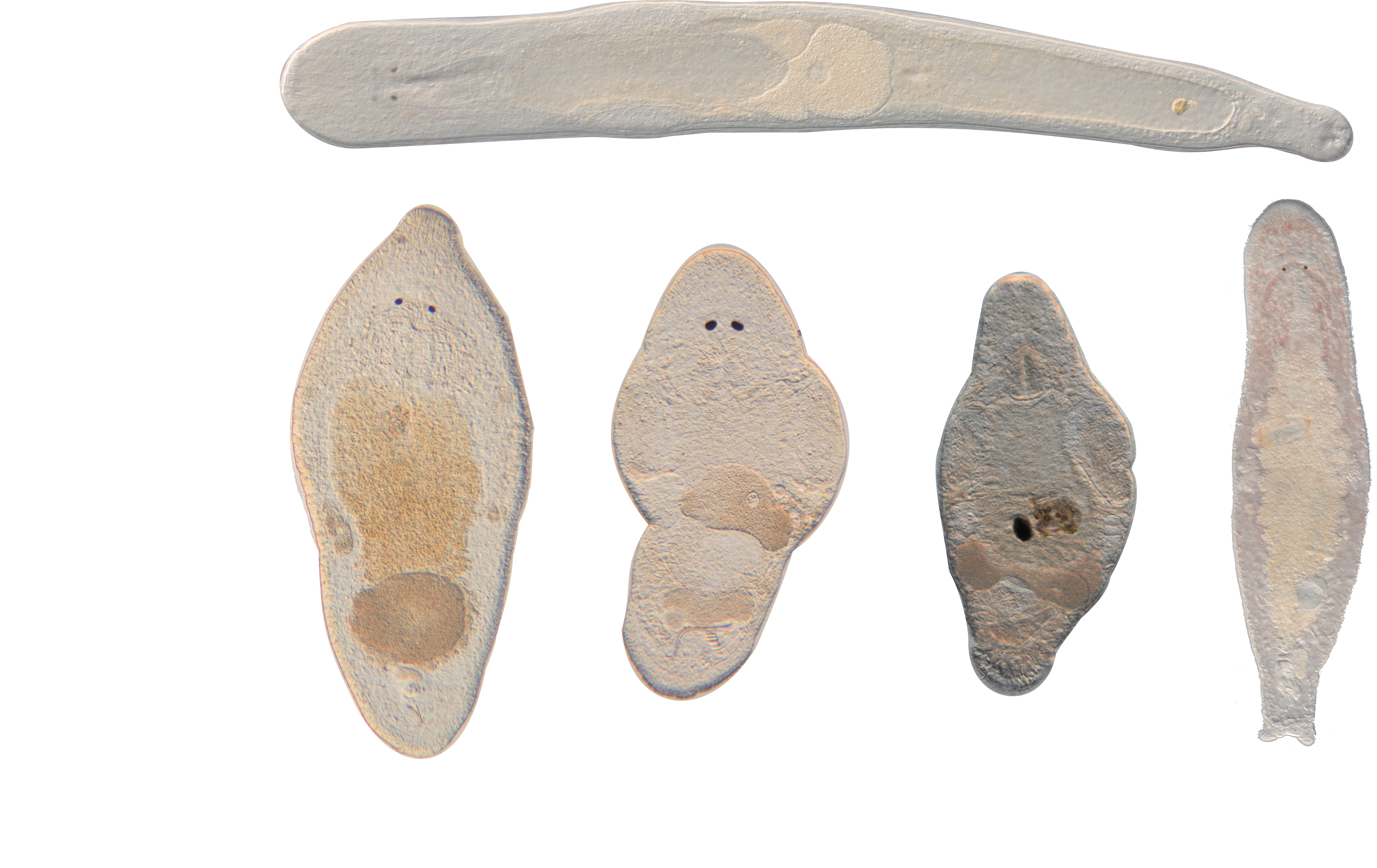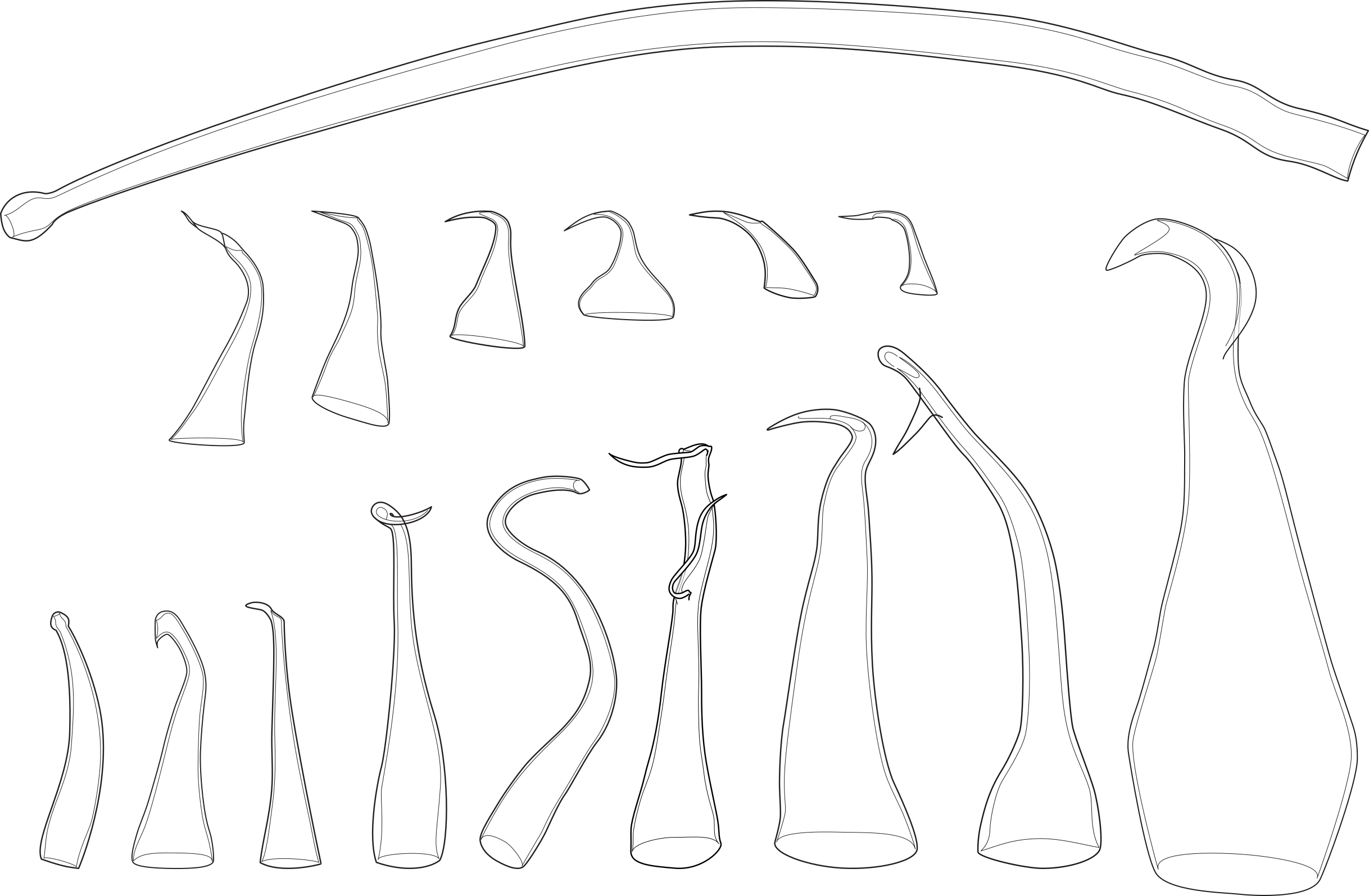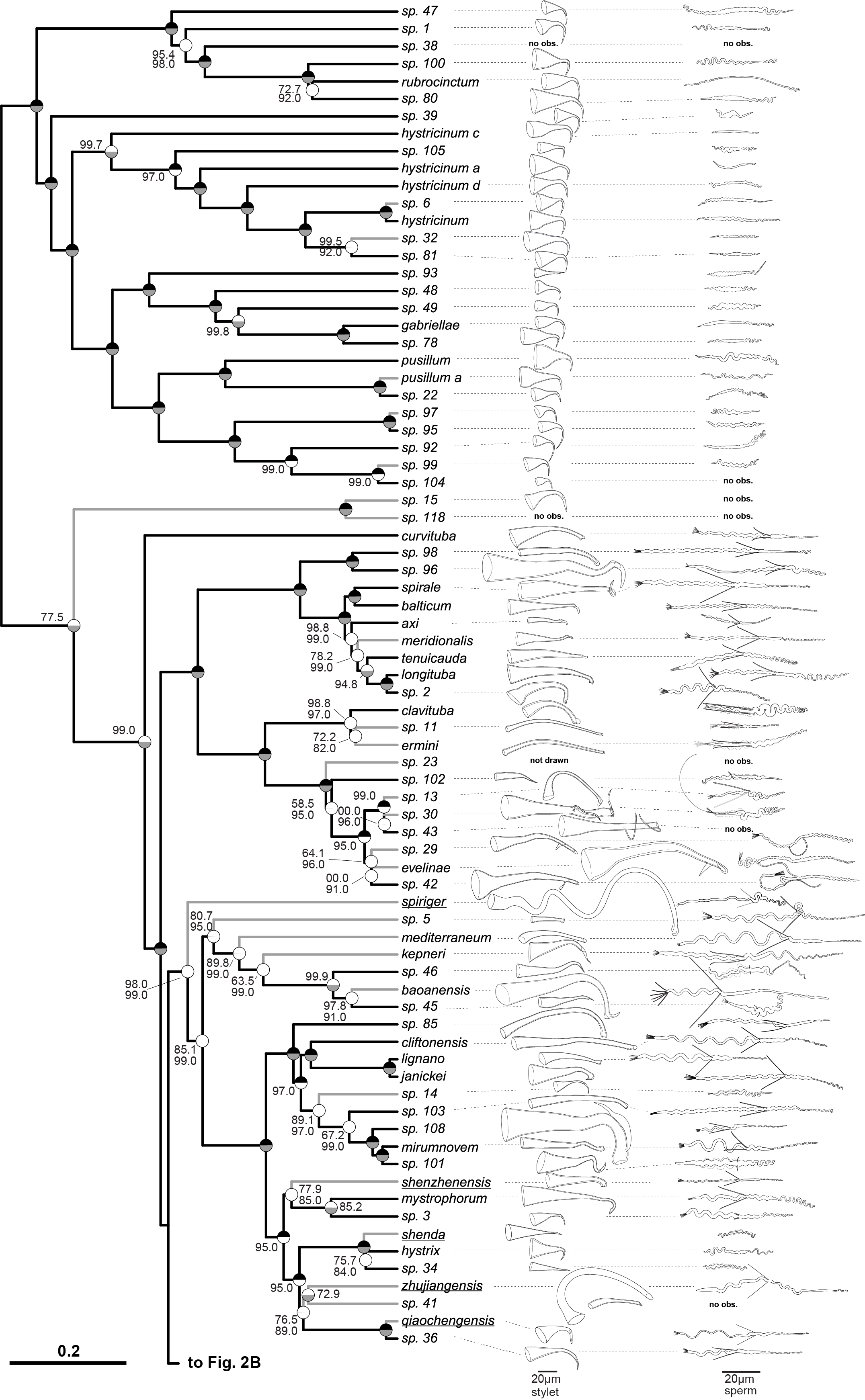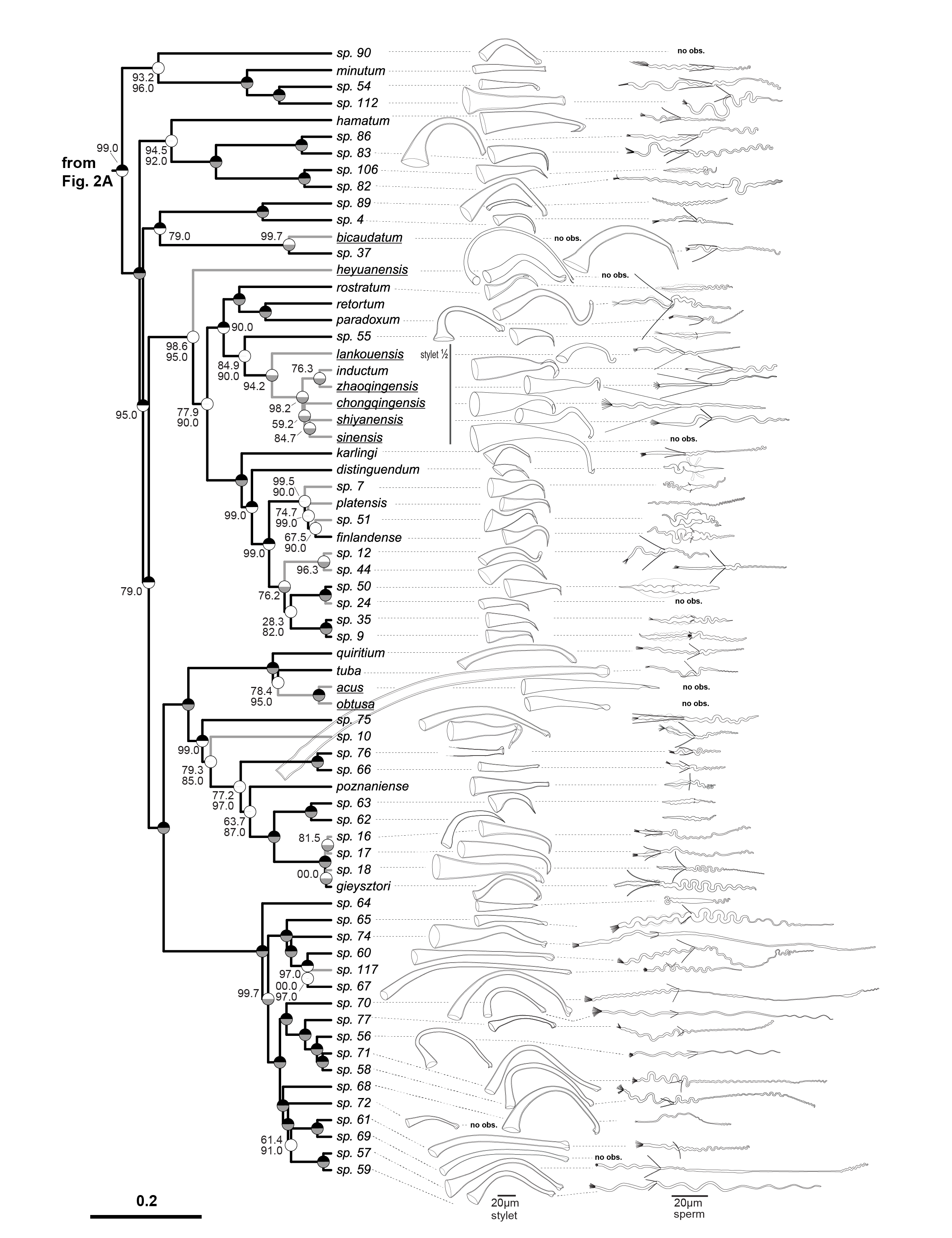Macrostomum flatworms are small aquatic animals with a global distribution. They inhabit a variety of habitats from the interstitial spaces between sand grains on beaches to freshwater ponds attached to vegetation and they can even be found in wet moss. The worms are very small - between 1 - 3 millimeter in length - which means we can only look at them with a microscope. If we do that we quickly notice two things: They are transparent, which allows us to study their internal organs in vivo and they are an incredibly diverse group. Macrostomum show an large diversity in their body size and shape. You can see that clearly with these few examples:

Not only body shape varies but also the morphology of the copulatory organs. The stylet (male copulatory organ) also has quite interesting shapes. Note that these images are to scale.

During my PhD we have collected 145 species and documented their diversity:

